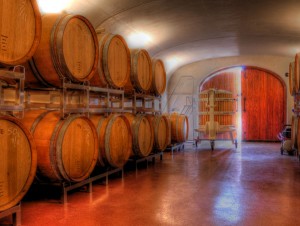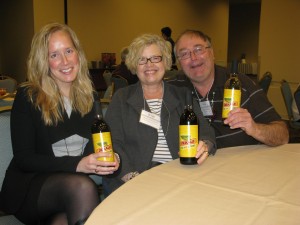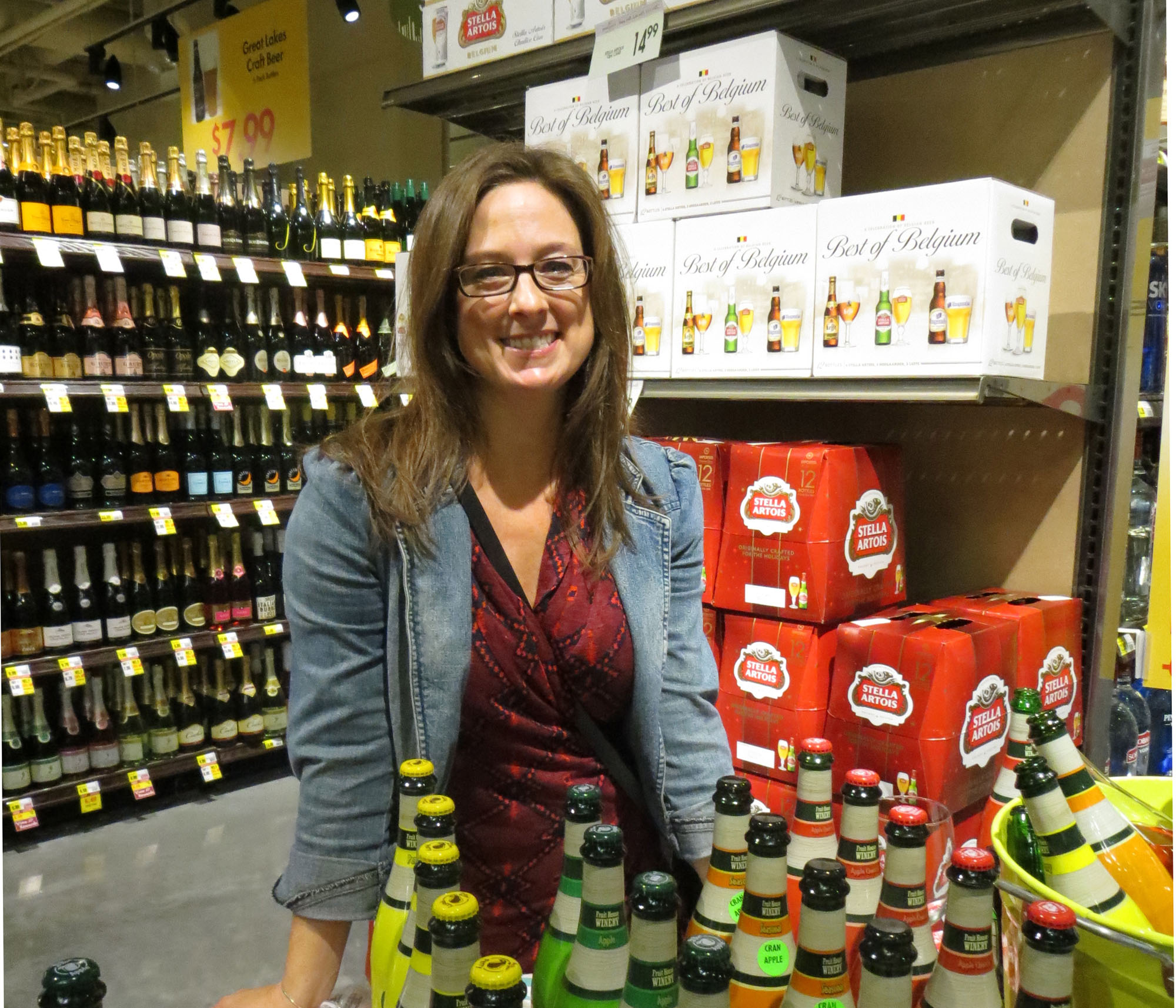Midwest Winemakers Blend Career Paths
‘Do not go where the path may lead, go instead where there is no path and leave a trail.”
Ralph Waldo Emerson

The barrel room at Harmony Hill Winery
Like an old grapevine, the paths we follow in life are full of twists and turns. Transitioning from other careers is not uncommon for Midwest wine makers, many of whom have successfully left other industries to pursue enology and viticulture. In this two-part series, Midwest Wine Press profiles four wineries that epitomize the diverse experience of Midwest winemakers.
This first installment looks at Harmony Hill Vineyards in Ohio and Waterman Winery in Illinois.
Bill and Patti Skvarla didn’t set out to become winemakers and owners of Harmony Hill Vineyards in Bethel, Ohio. ‘Our original intention was to supplement our incomes from the medical field by growing medicinal herbs on our property and making tinctures of Echinacea, Ginseng, and cordonopsis, ” Bill said. But as regulation increased, they looked for other crops to plant and, as Bill recalls, realized, ‘We could also learn to grow grapes for local wineries.”
In 2001, the Skvarla’s planted a small block of grapes in a horse pasture with the help of Ron Barrett who co-owns nearby Kinkead Ridge Winery. Although Bill, who was an emergency room nurse and clinical educator, and his wife Patti, a nurse anesthetist, had no prior knowledge of farming, they became amateur winemakers after several years of honing their skills using pre-packaged wine kits.
‘We began applying what we had learned through research and best-practices to making wine, and in 2001, we entered the amateur division of the Indy International Wine Competition and won first place for our Riesling,” Bill said. Bill, along with Patti, who is also a Level I Sommelier, now consistently win awards for the 10 hand-made wines they produce. Annual production is approximately 2,500 gallons per year.
Today, however, no kits are needed since 90% of their juice originates from the 3,400 vines grown on their vineyard which includes French-American hybrids Seyval and Vidal Blanc and vinifera such as Cabernet Franc, Bill’s personal favorite.
Much of the character of the wines from Harmony Hill comes from the winery’s location 30 miles east of Cincinnati. The vineyard occupies 4-acres on the glaciated, limestone soils of the Ohio River Valley American Viticultural Area (AVA), the second-largest AVA in the U.S. The Ohio River Valley AVA is considered the birthplace of American viticulture because in 1825 Nicholas Longworth planted the first Catawba grapes in the same hills where Harmony Hill and other Ohio wineries now have vineyards. By 1860, Ohio was producing more wine than any other state in the country.
During May, with over 800 followers present, Harmony Hill kicked-off the summer season with the release of their 2011 wines. Harmony Hill has built a passionate group of fans and has also appeared in the national news for some controversial policies regarding children.
See Related Story: Are Kids Taking Over Midwest Wineries?
For Bill and Patti Skvarla, compassion for others that started in nursing has grown into a life-long passion that enriches the lives of many through a commitment to wine and community.

Trisha, Alexa and Terrie Tuntland with their special label for DeKalb's 100th anniversary.
At the Waterman Winery and Vineyard in DeKalb, Illinois, 60 miles west of Chicago, education and learning play important roles in the lives of the vineyard’s owner and operators. After teaching for an average of 33 years, original partners Terrie Tuntland and wife Alexa, both Physical Science and Biology teachers, along with Clem Stiely and Larry Engelsman, hatched the idea of starting a winery in 1995 while drinking wine after a long week at school, Alexa recalls.
In addition to teaching, Terrie farmed 900 acres of soybeans and corn but wanted to grow grapes too. So in 1998, they procured “cold-hardy” vines from a nursery in California and began planting their first vineyard. After the first winter, almost 60% of the Cabernet, Riesling, and Shiraz vines perished despite the nursery’s assurance that the cold hardyrootstock would survive in Northern Illinois.
‘We were dumb newbies and we made some mistakes” recalls Alexa. ‘The wonderful thing was at the time Southern Illinois University and the University of Illinois (U. of I.) provided funds to assist start-up wineries.” Essentially starting over in their second year, the Tuntland’s planted two acres of French hybrid grapes in 1999 with the guidance of Bill Shoemaker and Imed Dhami from the U. of I. (Illinois has since substantially cut wine industry funding. Imed Dhami is now at Ohio State University, and Bill Shoemaker will retire later this year after thirty years with U of I.)
When they started the winery, the Tuntlands were teachers turned into students. They attended numerous workshops on subjects including sustainable vineyard management practices, operating, and licensing a winery and locating reputable nurseries from Canada, Minnesota, and New York which could provide more cold-tolerant rootstock, including some 400 new French-American hybrids. Today, their vineyard covers 12 acres.
By 2001, they were growing enough grapes, including Frontenac, Niagara, Concord, Cayuga, and Norton, to start experimenting once again. But instead of helping students in a lab, they made experimental batches of wine using a homemade kit, a hand-turned crusher/de-stemmer, and a manual bottling apparatus to produce 600 bottles of wine. Now, a former livestock barn built in the 1860’s serves as the winemaking operation and houses 22 stainless-steel tanks.
Retiring completely from teaching in June 2002, the Tuntland’s opened the winery that December. Today, they produce 2,000 gallons per year with help from daughter Trisha Tuntland, a CPA. Trisha owns shares in the business and is planning to take over eventually, along with her husband Steve Wolff who works for a microelectronics company.
‘We’re really happy with what we are doing, picking only what our families can process in a day to preserve all the natural goodness of the grapes that go into our wine. We want each varietal to reflect the unique growing area of central-northern Illinois,” said Alexa. That effort is paying off. In 2010, Waterman won the 2010 Illinois Governor’s Sustainability Award.



